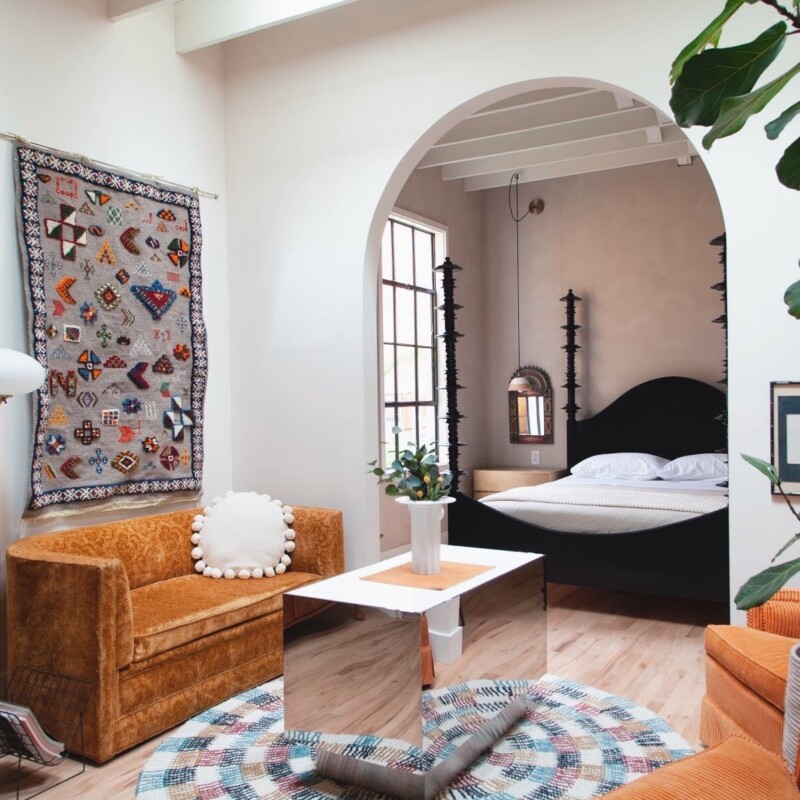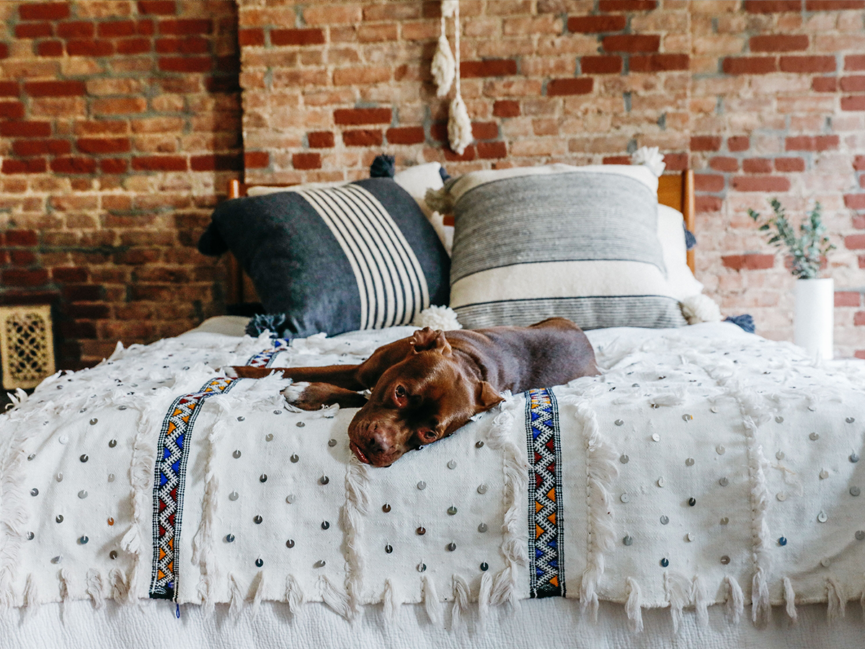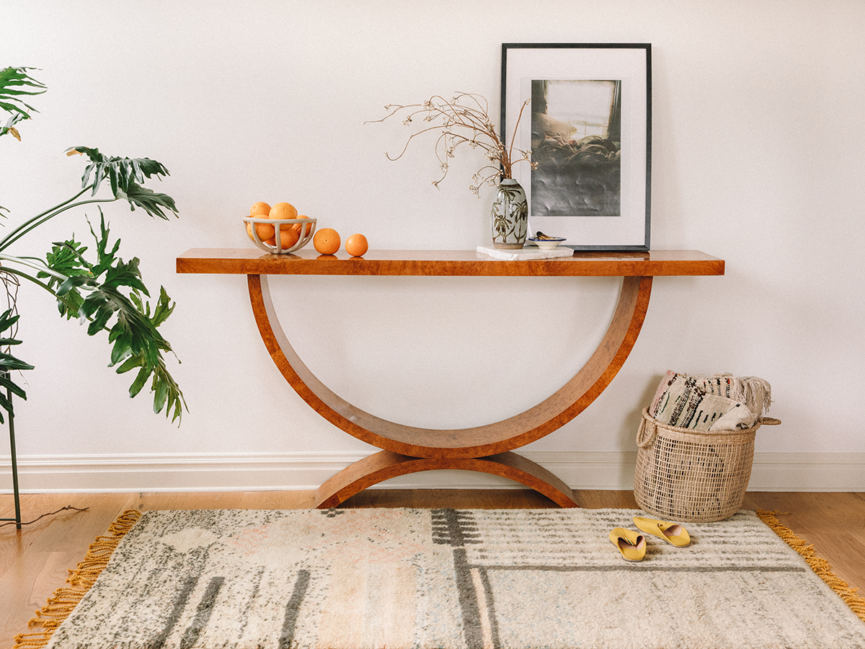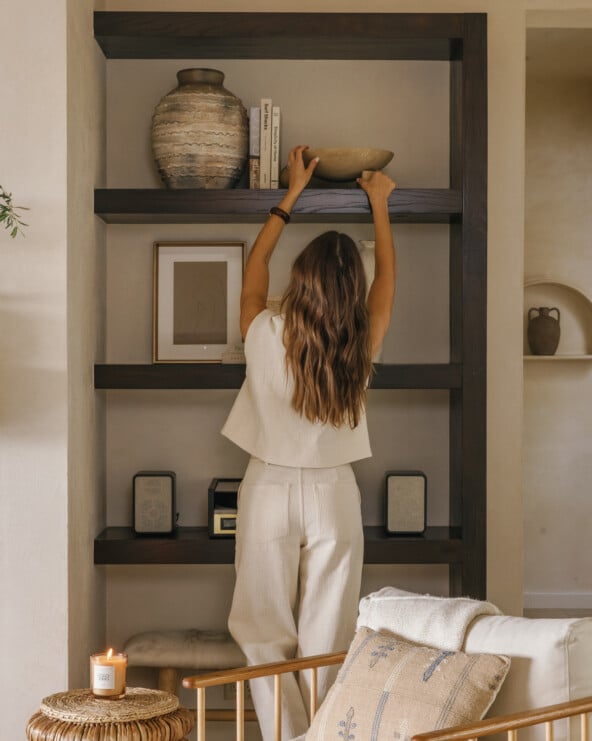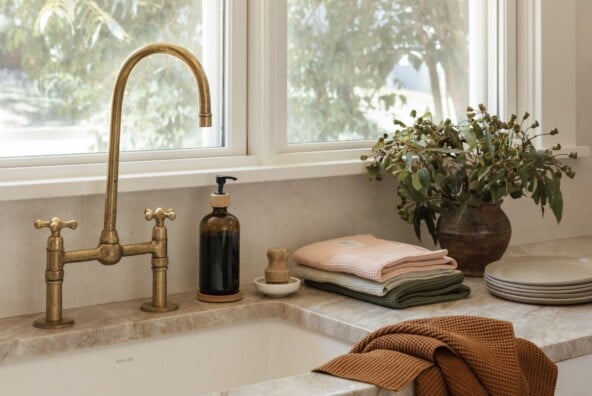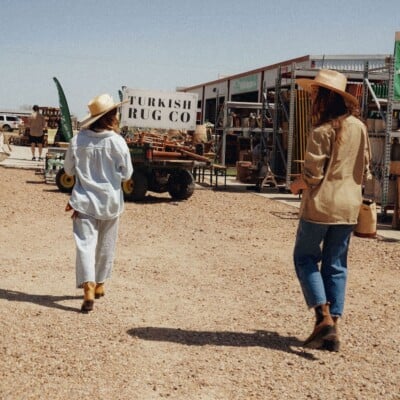Whenever I’m poring over the pages of Architectural Digest, I always spot a vintage Moroccan rug in some fantastic home. Often it boasts dashes of hot pink, ocean blue, or fiery orange. Other times it’s more demure in flax tones and rich blacks. A feat of artisan talent, these rugs are statement pieces that command attention while still allowing the rest of the room to shine. This chameleon-like quality is one reason why a vintage Moroccan rug is such a coveted design piece.
Other reasons are based on culture and heritage—all of which are stunning in their breadth and history. The craft of Moroccan weaving dates to 600 BC. Every authentic rug varies in technique and aesthetics based on the tribe, region, or village where it was made. These are facts that Mallory Solomon, founder and CEO of Salam Hello, a collection of one-of-a-kind handwoven textiles and rugs, holds paramount. Generations of tradition, artistry, and symbolism are imbued in these pieces, says Solomon.
“The variation is visible throughout every weave choice—from the animals the wools are harvested from, to the dye ingredients used to make the colors and the local symbols and traditions woven on the surface of the rug.”

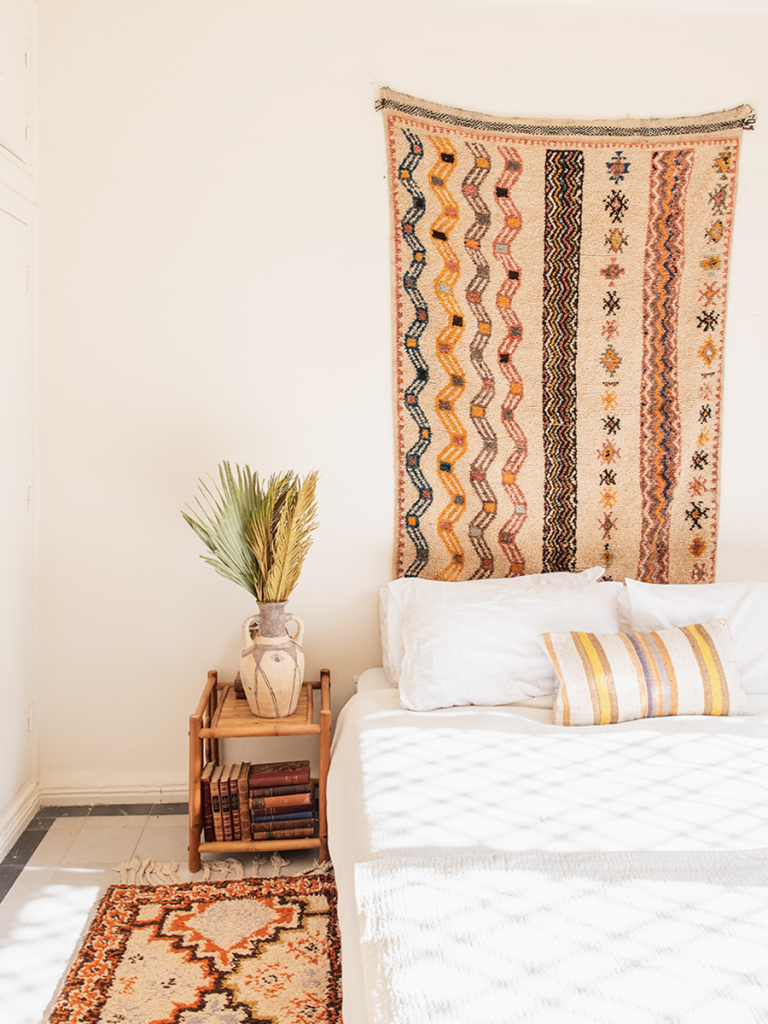
Knowing the rich traditions layered behind a Moroccan rug add to its integrity and appeal. Yet too often, knockoffs permeate the design space, as does little respect for the artisans behind the craft. Solomon, whose company works directly with more than 70 female artisan weavers, is aiming to shift this. Every rug for sale on Salam Hello is authentic and credited to its maker, who receives fair wages in exchange for their work.
“We believe the stories behind each of these pieces, including the artisan behind it and the techniques, symbolism, and tradition used to make them, should be preserved and shared,” Solomon adds.
So how do you know if a vintage Moroccan rug is authentic? And what is the best way to style one of these historically revered design pieces? I asked Solomon to share her insights.
How do you know a vintage Moroccan rug is authentic?
Purchasing a Moroccan rug can be tricky, admits Solomon. Lots of sellers claim to sell authentic handmade pieces when that’s not the truth. “If you’re lucky to be purchasing one in-person, flip the rug over or ask for a picture of the back of the rug,” she suggests. “The back of the rug holds the technical key to the quality of a rug. You’ll want to see uniformity in every knot, as well as the space between each one.”
Next, Solomon suggests asking the seller the following: What materials did they use? Do they know the tribe or artisan who made the piece? Do they know the meaning of the design?
Solomon says every rug sold at Salam Hello is made from 100 percent live wool, which means the wool comes from live sheep, lamb, or camel without harm to the animal. “Our artisans usually card, spin, and dye the wool themselves using various spice blends, making for a higher quality piece.”
She adds that “Moroccan rugs represent generations upon generations of tradition, artistry, and symbolism. While these rugs are as beloved as ever, much of their history and symbolism has been lost in translation and transaction over time.”

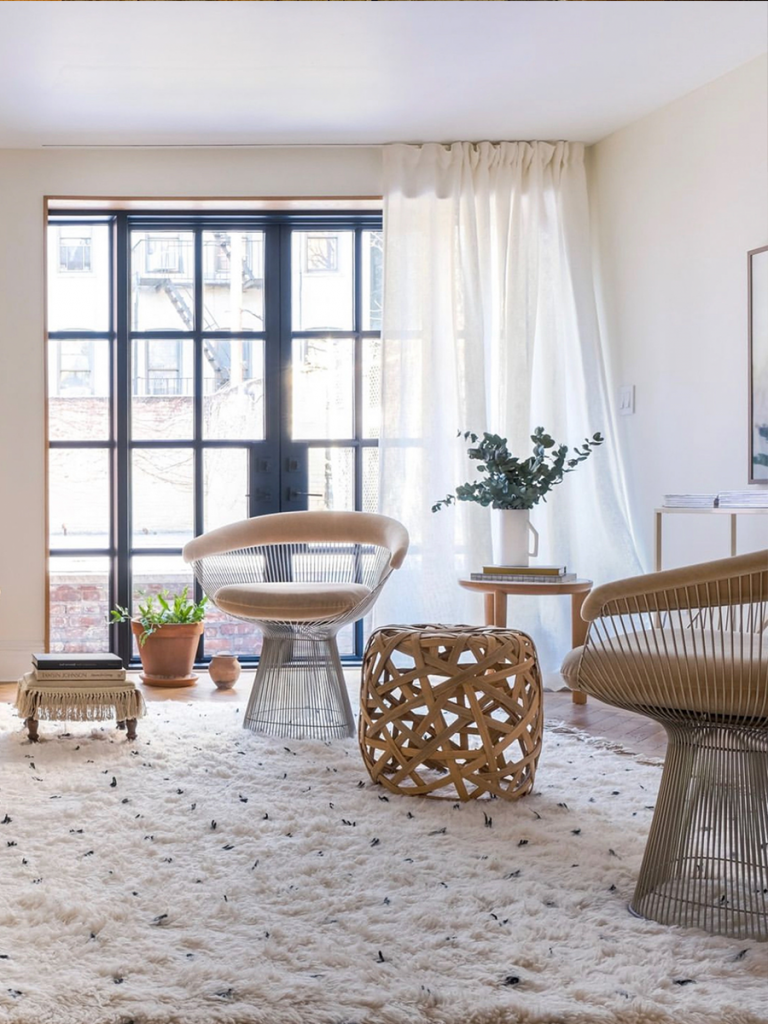
What is the best room for a Moroccan rug?
No room is off limits to a Moroccan rug, believes Solomon. Finding the perfect one in size and look depends on the room. To make this easier, Solomon and her team have created a sizing guide for finding the right fit. A few key points include:
For the Bedroom
Find a rug that stretches beyond your bed frame. You can have it extended on the front end or find a piece that grounds all your furniture from the bed frame to the side tables. You can also mix and match by flanking both sides of your bed with an accent piece and/or runners.
For the Living Room
Smaller to medium size rooms look best with a rug at the center of the room under the coffee table. For a larger living room, Solomon suggests utilizing a larger rug that fits under all the furniture.
For the Hallway
A runner is the best value add, believes Solomon. “It can be used as a transition piece for a hallway or by adding color and warmth to the kitchen floor.”
For the Dining Room
Complement the table by picking a size that is a base for chairs, even when the chairs are pushed back.
For the Bathroom
This room can be tricky for rugs, “as you’ll need to make sure the material can withstand damp environments,” says Solomon. The best bet is a long runner placed near the vanity.

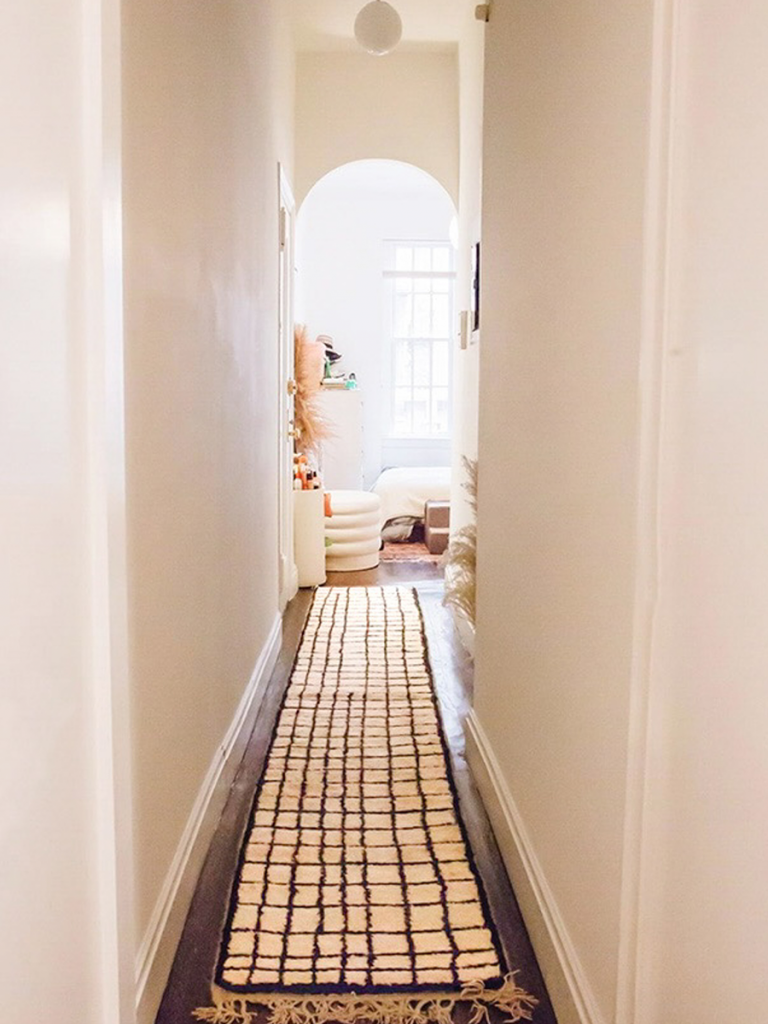
How else can you decorate with a Moroccan rug?
Solomon says to think of the floor “as your fifth wall.” A handmade Moroccan is an art piece in and of itself, and the floor is another place to showcase a great piece. Also don’t be afraid to treat it as a painting. “Hanging rugs on the wall can be a funky way to highlight the amazing handmade designs that many of these artisans bring to life,” she adds.

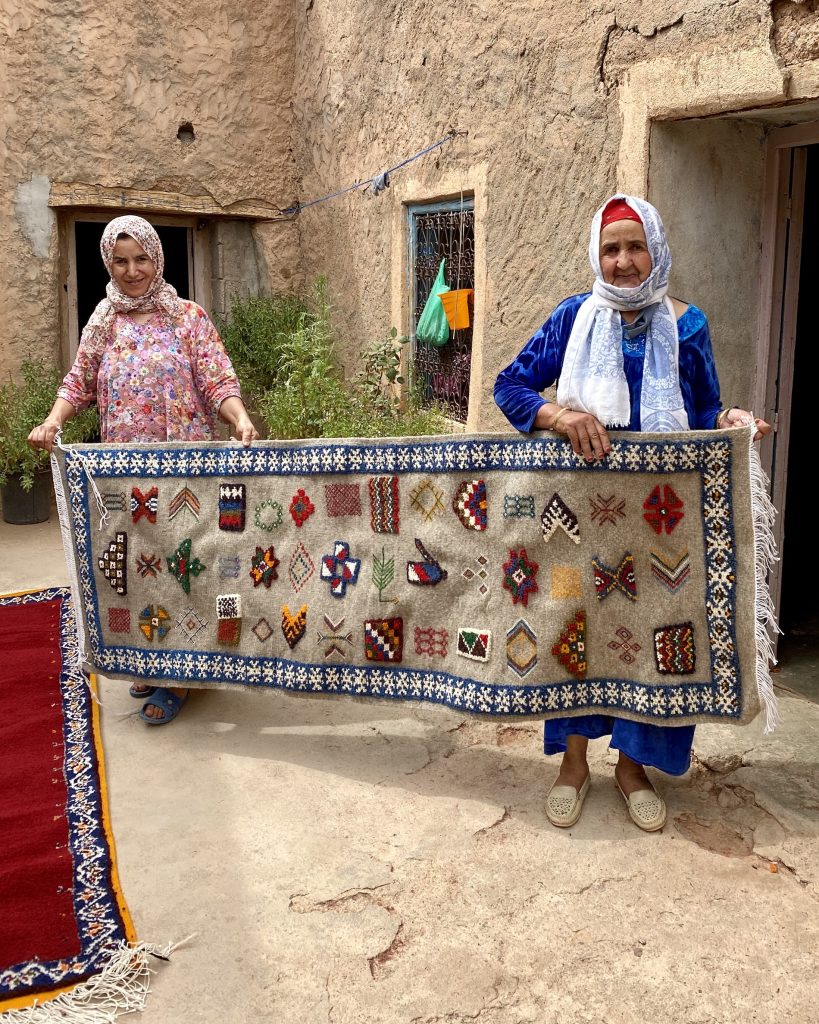
How do you care for a Moroccan rug?
An authentic Moroccan rug is made to last for a lifetime. So when it comes to caring for it, don’t overthink it, says Solomon. That said, she suggests doing a few things to extend its vibrance:
Take it outside and shake it vigorously once every two weeks. If the rug is too large, or if you lack the space, you can vacuum it once a week. Do not use a vacuum with a brush, a rotating motor-head, or anything that can pull the natural fibers. Vacuum on low-power and with a flat nozzle attachment. For rugs with a high pile, vacuum in the direction of the pile and lift the nozzle after every move. Don’t forget to flip the rug and vacuum the reverse side to get anything that is deep in the piles as well.
Lastly, Solomon suggests rotating the rug every three to six months. This will help to avoid any bacteria from forming in the areas where furniture is sitting or there is limited foot traffic or sunlight. (But be aware that direct sunlight will fade the colors over time, she warns.)


